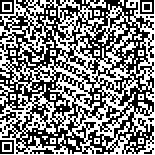刘建波,平振会,袁会珍,丁月新,刘殿武,刘勖.聚类分析在小儿脑性瘫痪危险因素分类中的应用[J].中华物理医学与康复杂志,2003,(11):.-
扫码阅读全文

|
| 聚类分析在小儿脑性瘫痪危险因素分类中的应用 |
|
| |
| DOI: |
| 中文关键词: 脑性瘫痪 危险因素 聚类分析 |
| 英文关键词: Cerebral palsy Risk factors Cluster analysis |
| 基金项目: |
|
| 摘要点击次数: 2116 |
| 全文下载次数: 1703 |
| 中文摘要: |
| 目的探讨小儿脑性瘫痪危险因素分类的新方法。 方法整理1995~2000年在医院就诊及住院的635例脑瘫患儿的病因资料,应用SAS软件包的系统聚类分析模块对41项高危因素进行分类分析。 结果41项小儿脑瘫危险因素分为极高、高、中及低危险因素4类。 结论聚类分析为小儿脑瘫病因分类提供了一种科学有效的新方法,与传统分类法配合能更好地指导小儿脑瘫的防治工作。 |
| 英文摘要: |
| Objective To explore a new method to classify risk factors for children with cerebral palsy(CP). MethodsMedical data of 635 children with cerebral palsy diagnosed from 1995 to 2000 were collected and reviewed. Using SAS software package, 41 risk factors were classified by clustering methods. ResultsForty=one risk factors of children with cerebral palsy were classified into 4 clusters: the highest, the higher, the general and the lower level of risk factor. ConclusionCluster analysis supplies a scientific and effective new method of classification of risk factors for children with cerebral palsy. Hierarchical clustering method in combination with the traditional method can provide guidance for prevention and treatment of cerebral palsy effectively. |
|
查看全文
查看/发表评论 下载PDF阅读器 |
| 关闭 |